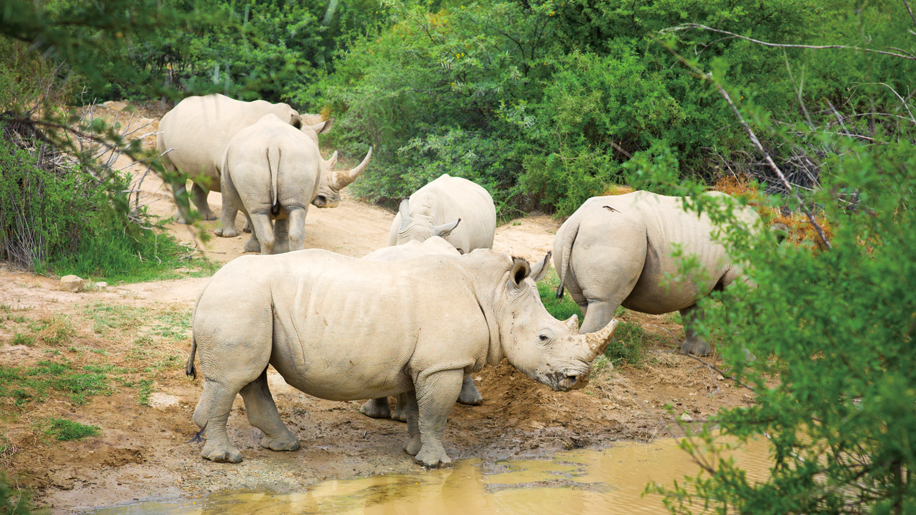
Soweto came to the world’s attention only in 1976 after the Soweto Uprising. Students took to the streets to revolt against the government’s decision to enforce Afrikaans (over their native dialect) as the primary language in schools. Police opened fire on the protesting students, killing some and injuring many.
From then on, it became one of South Africa’s stages for rioting against state-imposed rules that were deemed unjust and biased.
During the 1980s, Soweto also came to be known as one of the biggest centres of resistence for apartheid. Student bodies, street committees and local civic groups fought against racism, with backing from the African National Congress.
In 1995, Southern Metropolitan Transitional Local Council took in Soweto as a member, and in 2002 it was incorporated into the City of Johannesburg. Today, Soweto is Johannesburg’s largest black township where all the 11 official languages are spoken.
1. MANDELA MUSEUM
The house on Vilakazi Street, Orlando West, Soweto was once the home of South Africa’s Former President, the late Nelson Rolihlahla Mandela and his family. Mandela donated the house to Soweto Heritage Trust in 1997, and in 1999 it was declared a National Heritage Site.
Restoration work began only in 2007. It still echoes the essence of what it used to be when it was occupied – furnishings inside its rooms are those that were once used by its former occupants, photographs and memorabilia on the mantle are exactly where they used to be, and even bullet holes in the walls are untouched. The entire walk through the home gives a real sense of Mandela’s presence that once dominated the red brick house.
The only additions to Mandela House are the visitor centre, and a small biographical museum. Only 20 people are allowed entry at a time, and it is recommended to book your slot in advance. ■ Guided tours are available at no extra charge and last for about 40 minutes. Open 9am-5pm; entrance fee: R40/₹195; mandelahouse.com
2. HECTOR PIETERSON MEMORIAL AND MUSEUM
At its entrance is a fountain, whose granite base reads: “To honour the youth who gave their lives in the struggle for freedom and democracy.”
Stacked stones form the back of this Rfountain represent those who participated in the Soweto Uprising. Gaps between the stones denote lives lost in the rebellion. Flowing water through them signify the blood that was shed.
On the morning of June 16, 1976, students assembled in their schools before their march to Orlando Stadium to protest against being educated in Afrikaans. En route, police opened fire on them.
Hector Pieterson was one such victim. The photograph of his body being carried by a fellow student with his sister running by their side became the “symbol of resistance against apartheid”.
Inside the museum building are disturbing photographs from that tragic day, accompanied with an audio and video commentary on the events that unfolded on June 16 of that year. Through the gallery is a doorway that leads to a landscaped garden with names of those lost in the Uprising etched on lose bricks. ■ Open 10am-5pm, until 4pm on Sunday; entry is free; 8288 Khumalo Street, Orlando West, Soweto
3. SAKHUMZI RESTAURANT
It came into existence from what once used to be a way of life. Sakhumzi and his friends used to hang out under a tree near his home almost every day, sharing dreams over beer. Everyone used to pool in to buy the alcohol and food. In the evenings, with the setting sun, their appetites rose. Sakhumzi’s kitchen was a free community where anyone who could contribute money could sit at their table.
Thus Sakhumzi Restaurant came into being in 2001. He revamped his living room to accommodate paying guests, but now, 15 years later, the eating area has spread into his bedrooms too.
Expect community-style seating there with friendly hosts who are as informal as a friend would be at this all-day eatery. À la carte and buffet options are available with beers, wines and cocktails. ■ Open 11am-10pm; sakhumzi.co.za

ATTRACTIONS OUTSIDE SOWETO
Apartheid Museum
It opened in 2001 and is one of the most detailed galleries on 20th century South Africa. A series of 22 exhibition areas, assembled by a team of film- makers, photographers, historians and designers, illustrate apartheid as it was in the form of text panels, artefacts, short films and photographs.
Displays educate visitors on how racial segregation ranked whites on top, and blacks and other ethnic groups at the bottom. Documented literatures tell the story of how apartheid came into being and the political groups formed for and against the unjust practice. Everything from peaceful protests, to violent law enforcements and torture are shown in black and white photographs.
■ Guided tours are available for R5/₹24 and last about two hours. Open 9am-5pm; entrance fee: R80/₹390; apartheidmuseum.org
Lion and Safari Park
This one is on the outskirts of Johannesburg. It’s not a zoo really, and neither is it a safari park. The animals don’t hunt; they’re fed at regular intervals and live in enclosures that spread over acres.
The park’s zebras, hyenas, ostriches, lions, giraffes, wildebeest, wild dogs, cheetahs, and meerkats share a total of 1,482 acres. The carnivores and herbivores live on either side of the park, the former have exclusive enclosures.
We chose the guided lion and wild dog tour (R175/₹854) that took us through prides of lions – one was of just the males, the other were lionesses and their cubs. The last enclosure had wild dogs. Other attractions include a walk with a cheetah, petting a lion cub, and night safaris. These again require separate tickets.
An animal lover will easily be able to spend the day there, amusing oneself with giraffes and ostriches who don’t require a ticket for interactions. ■ Open 8am-9pm; entry is free, but activities are chargeable; lionandsafaripark.com












